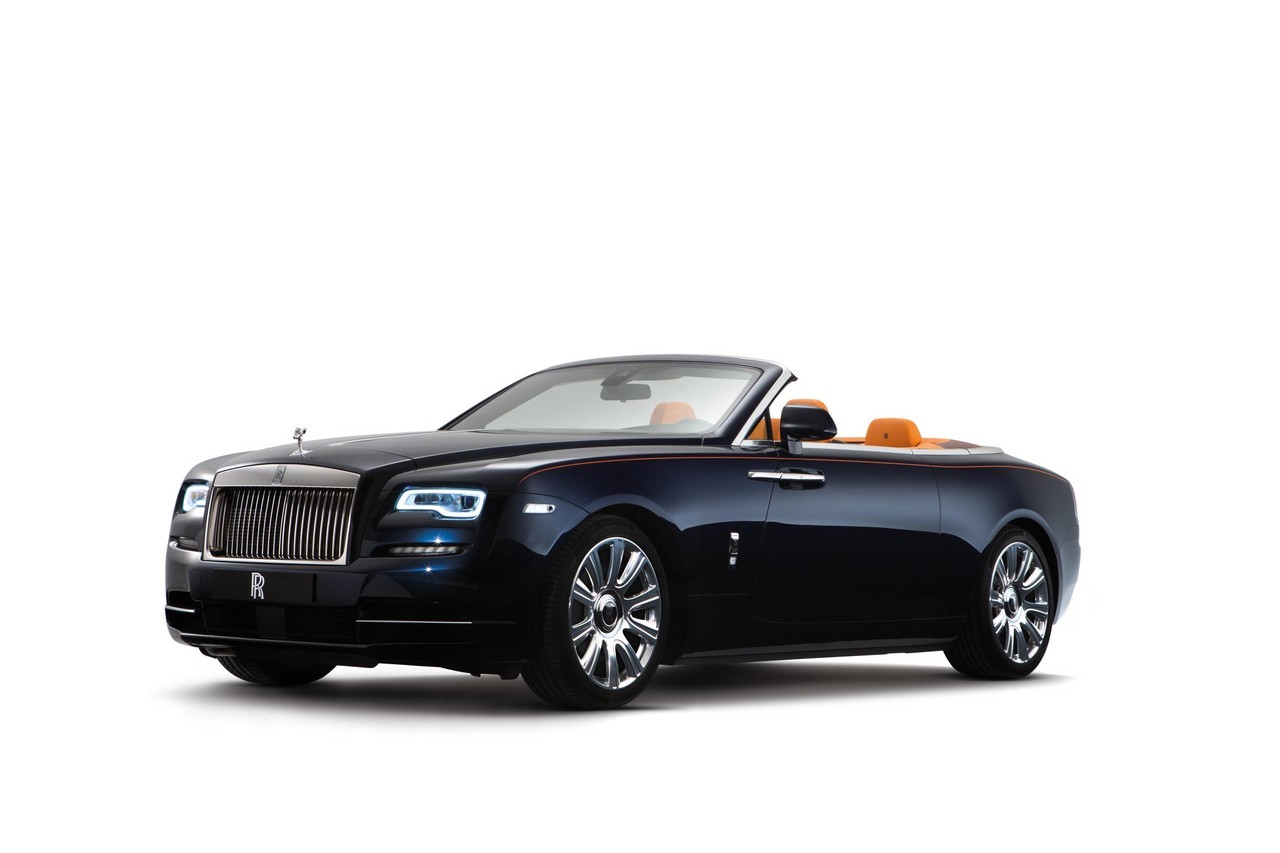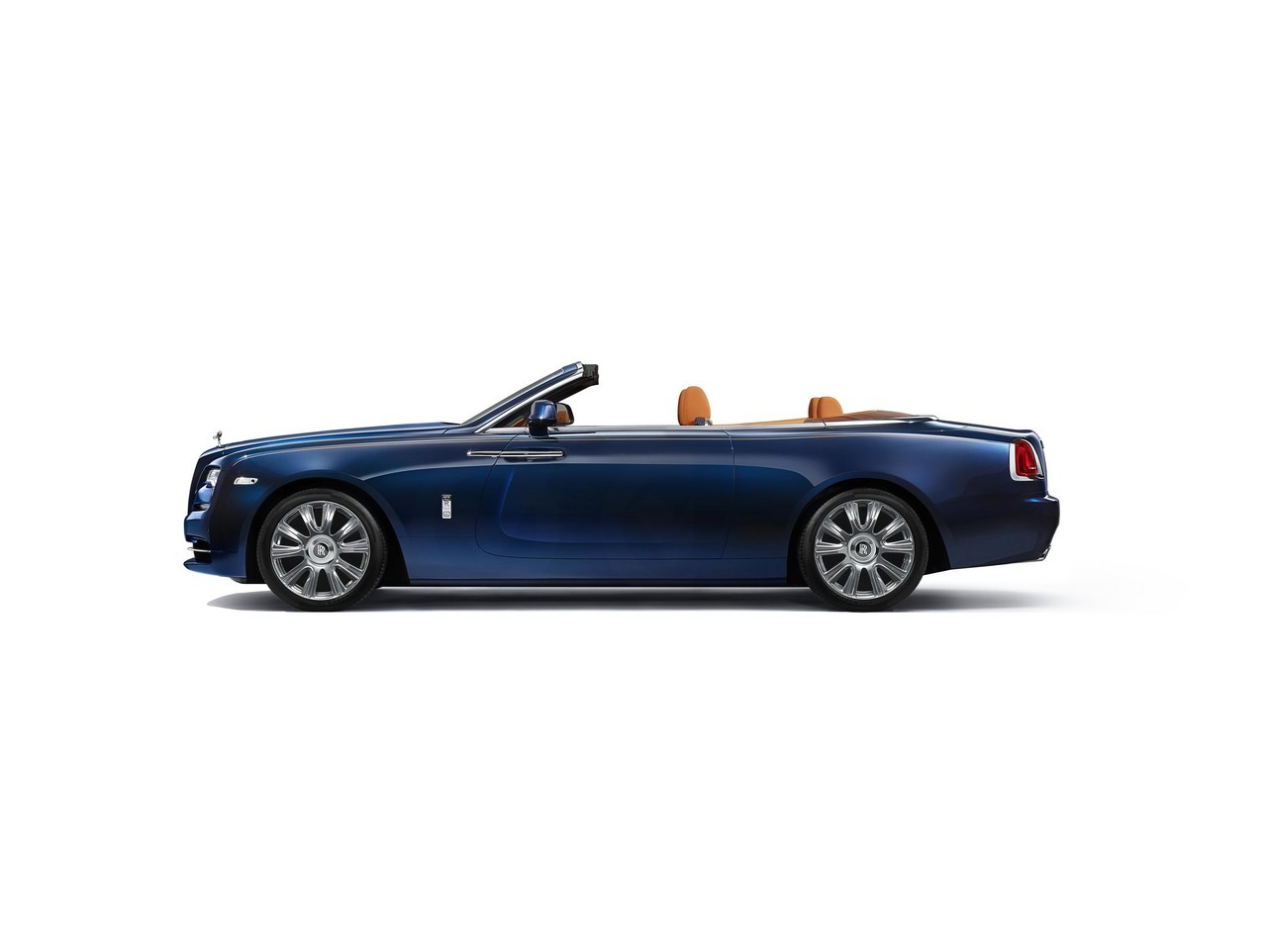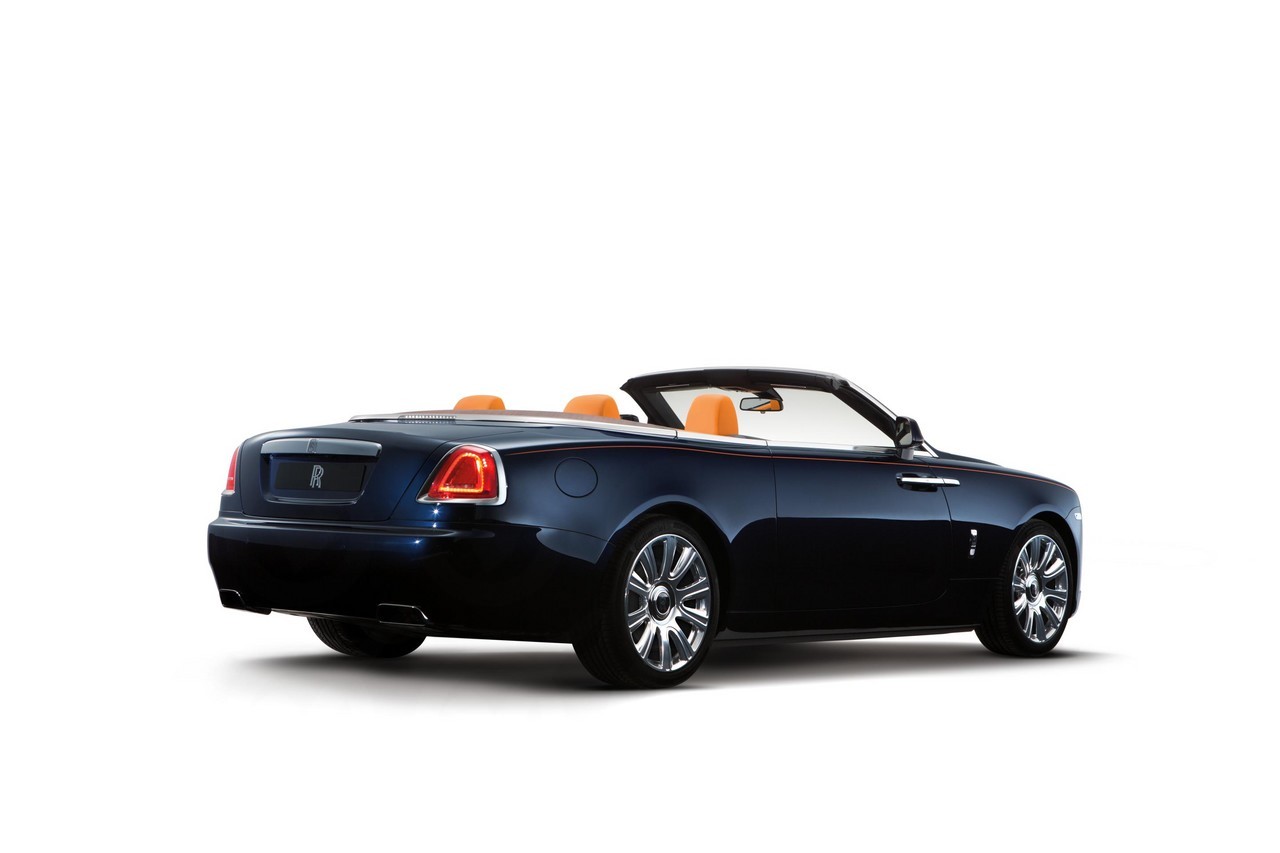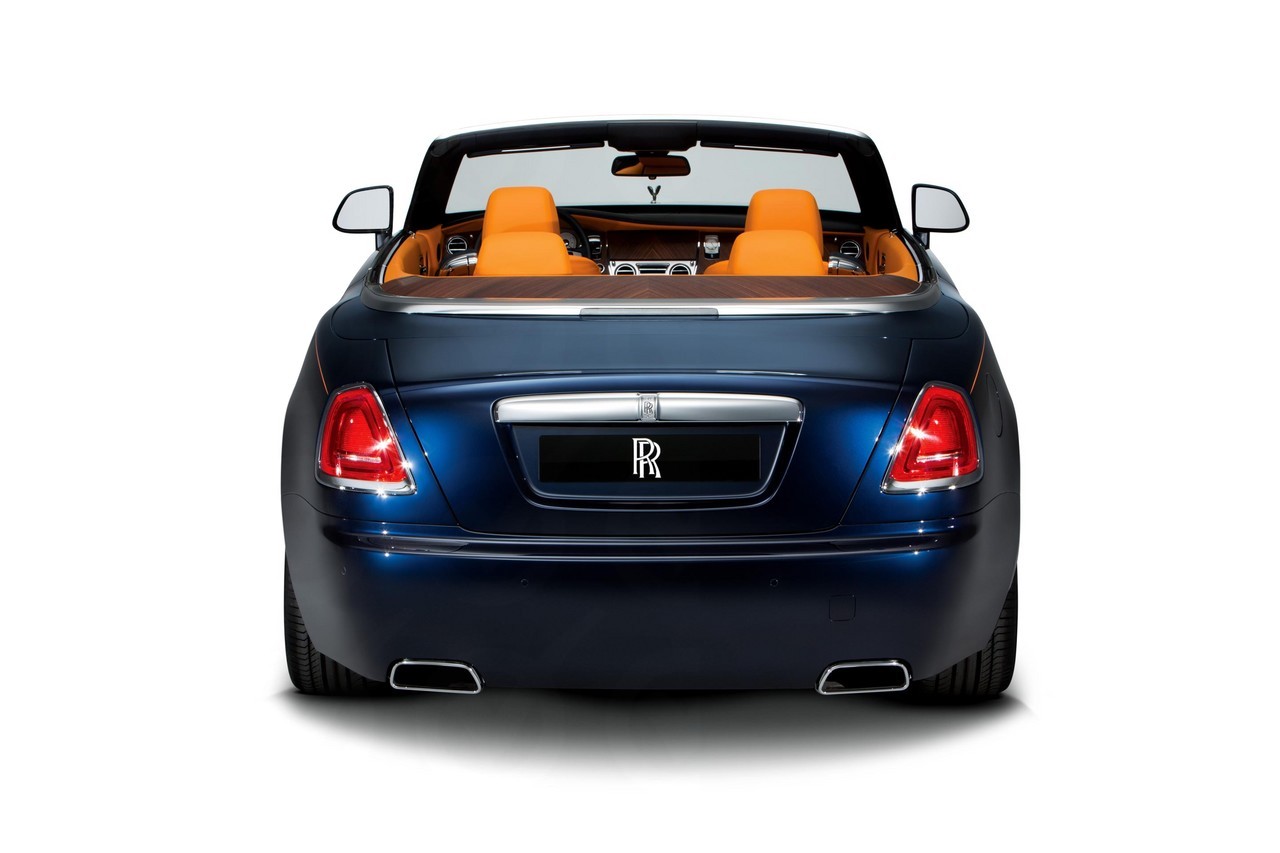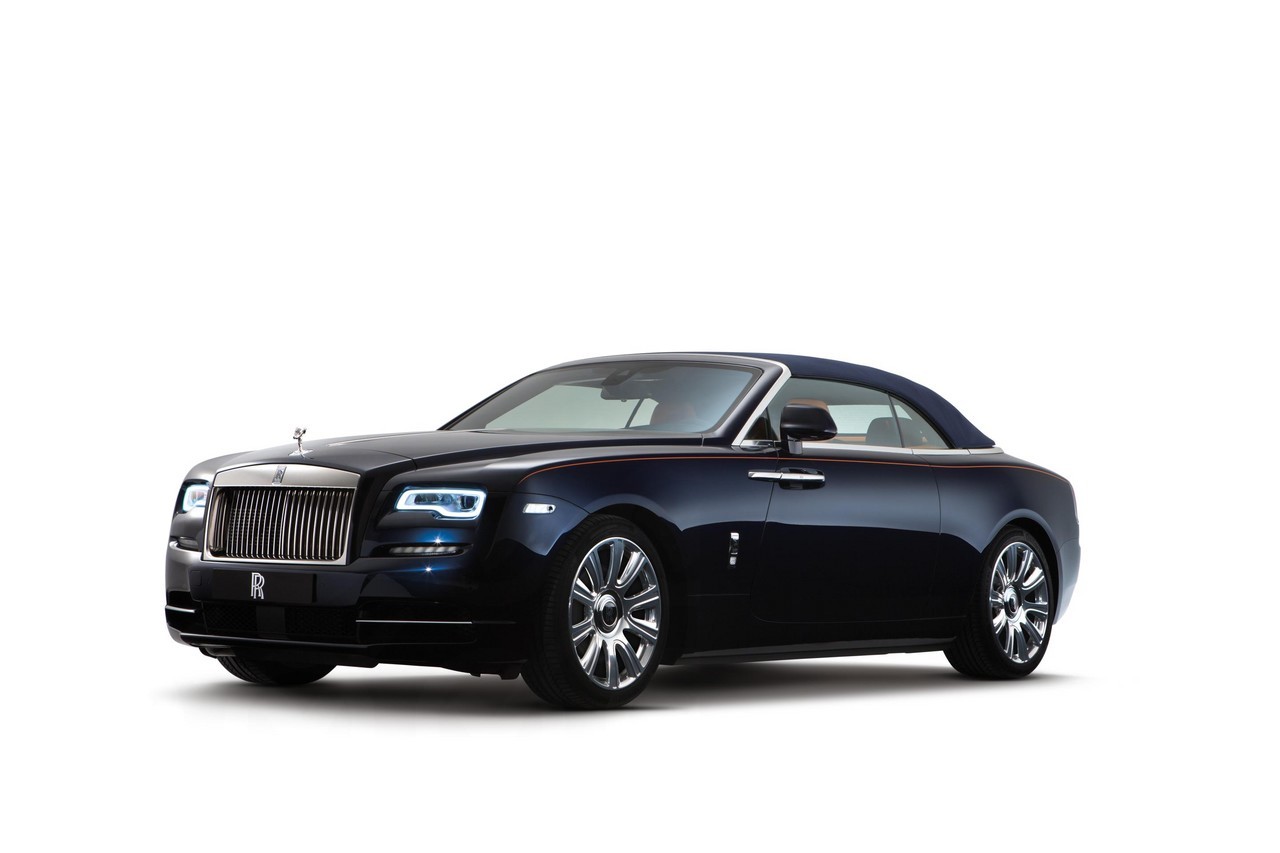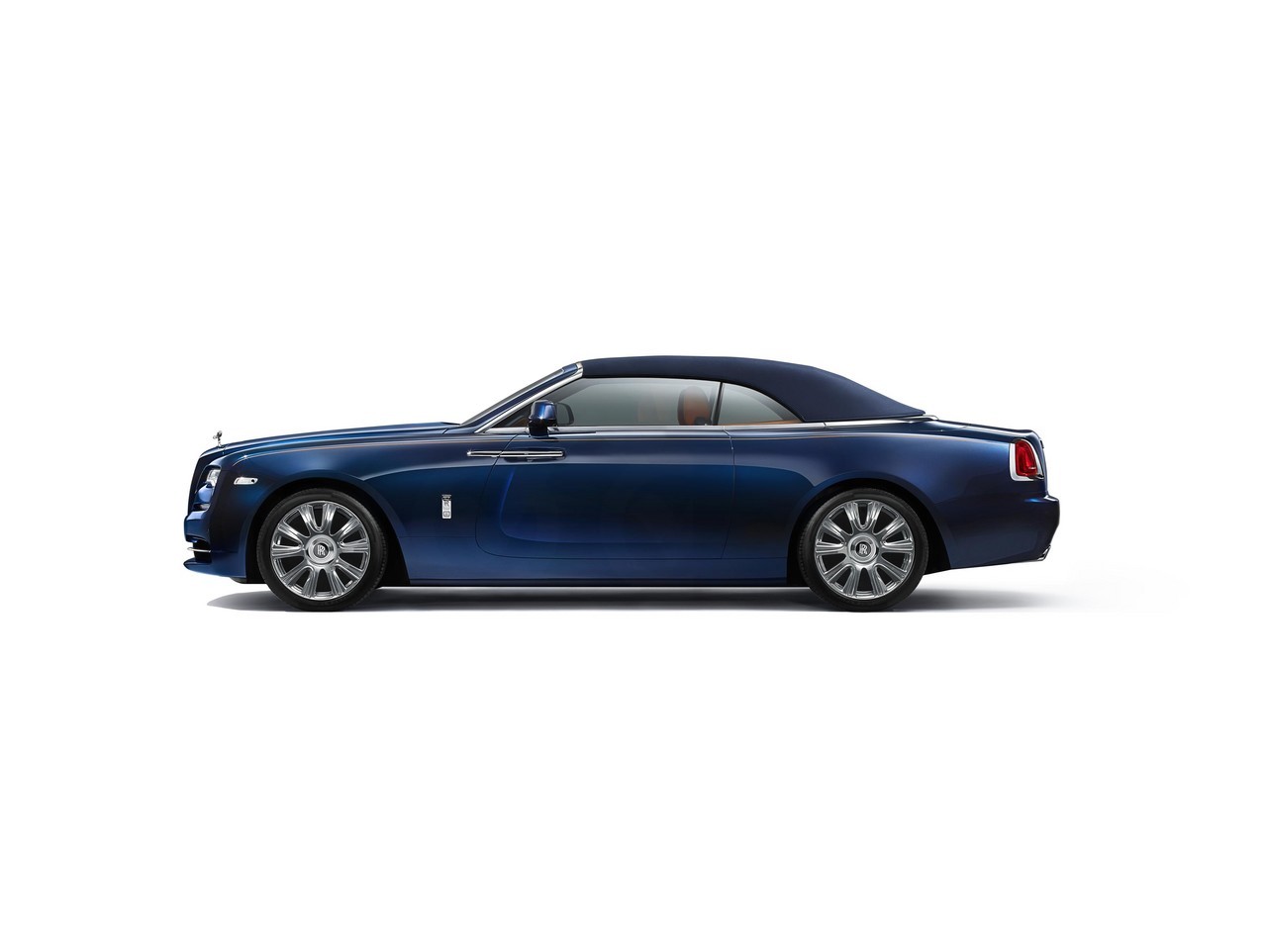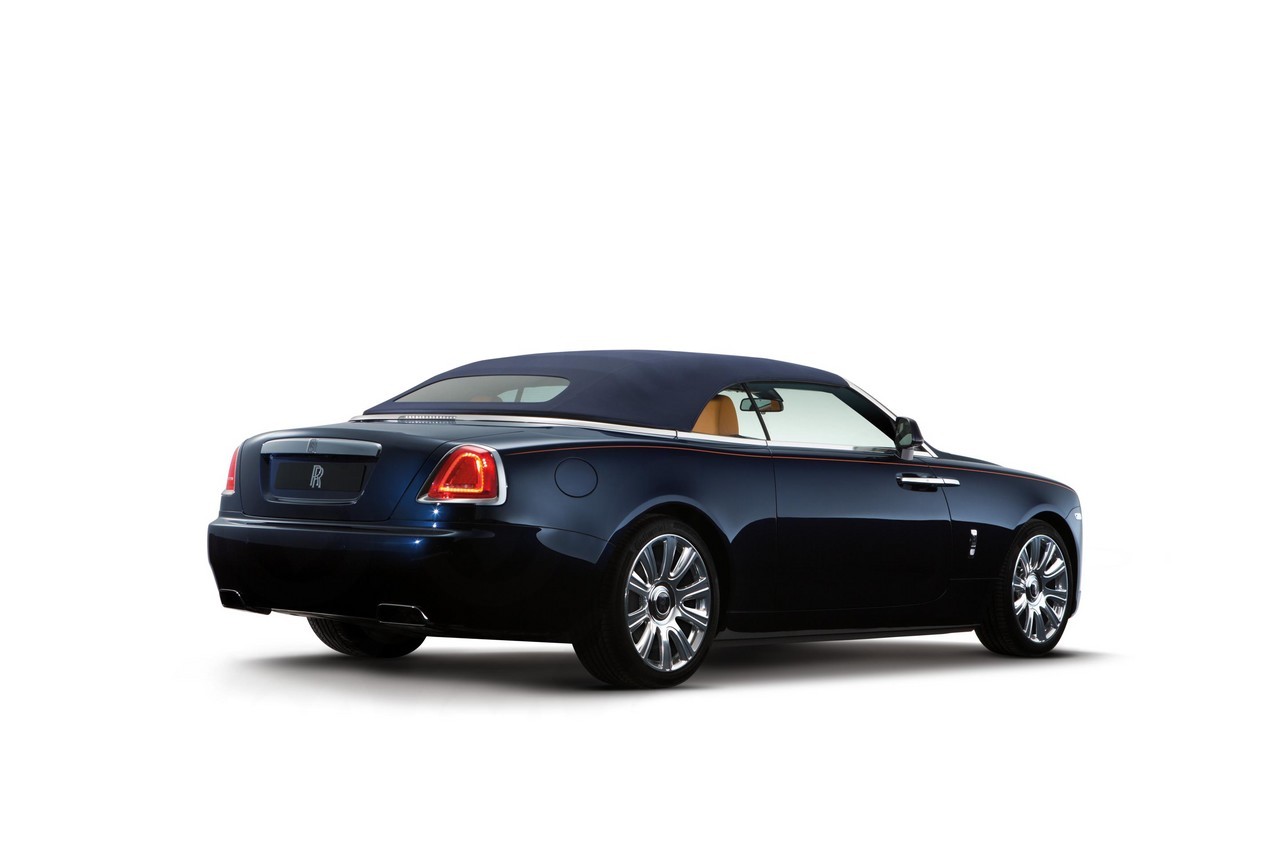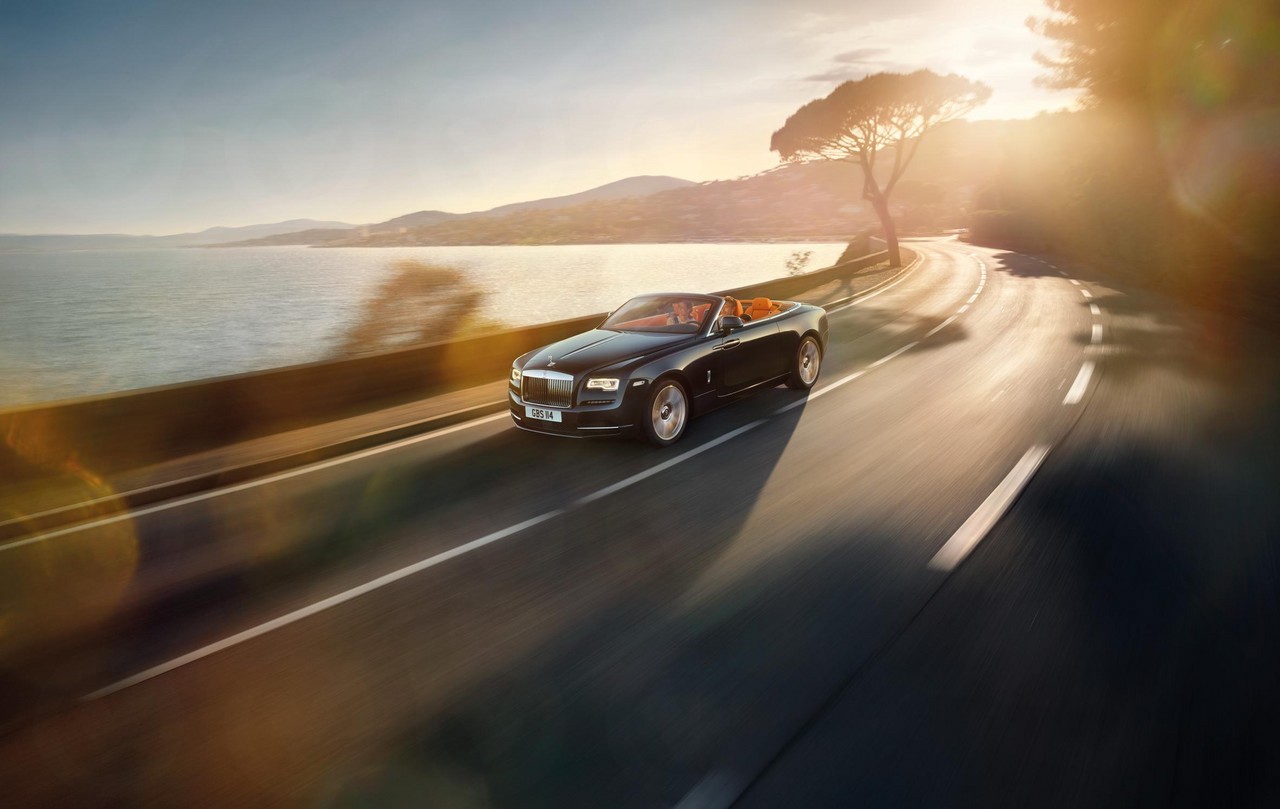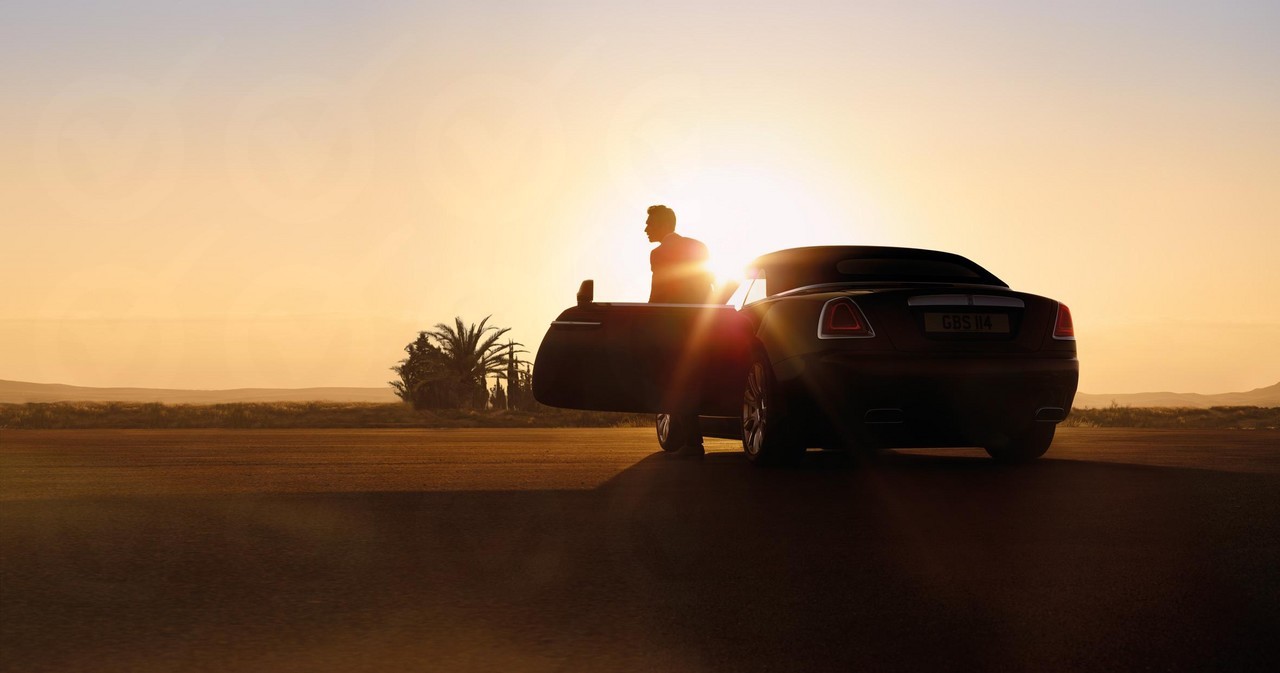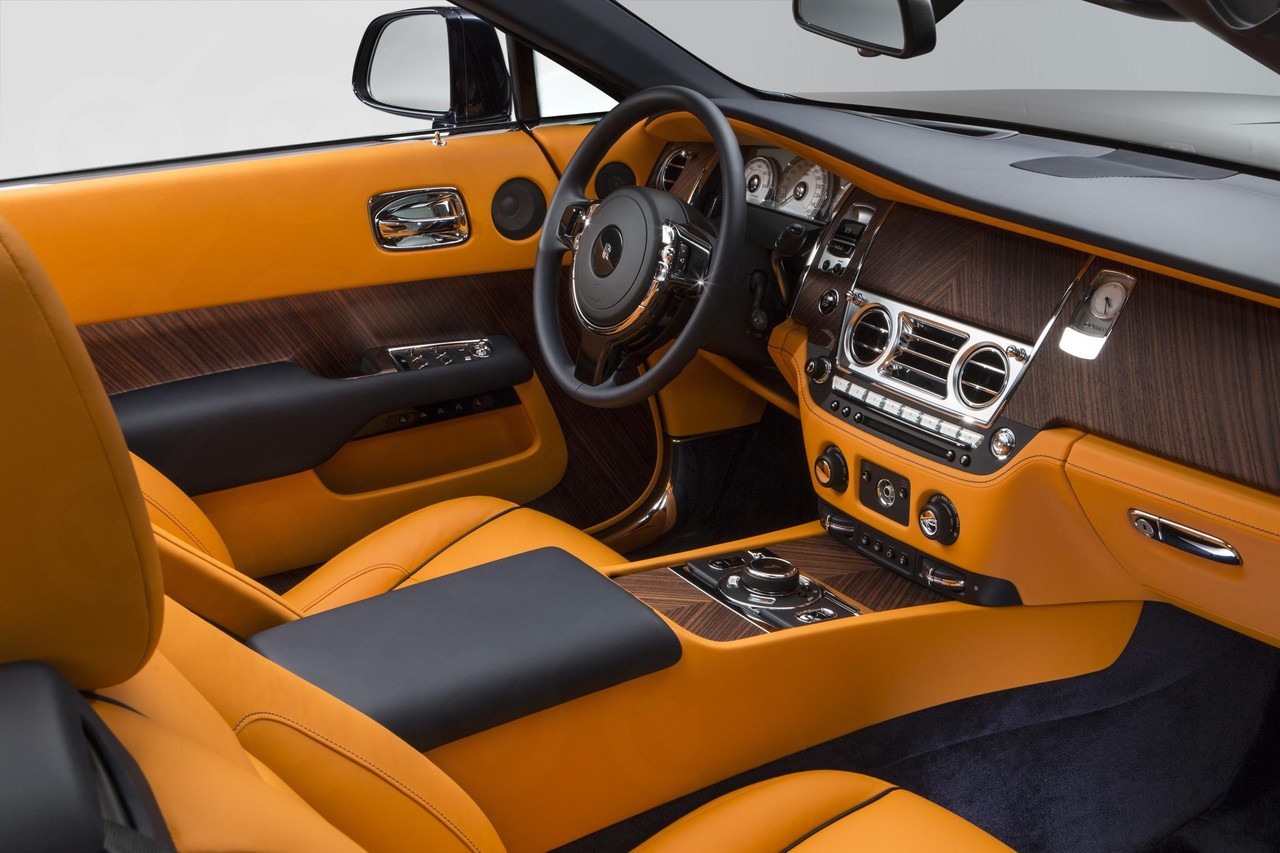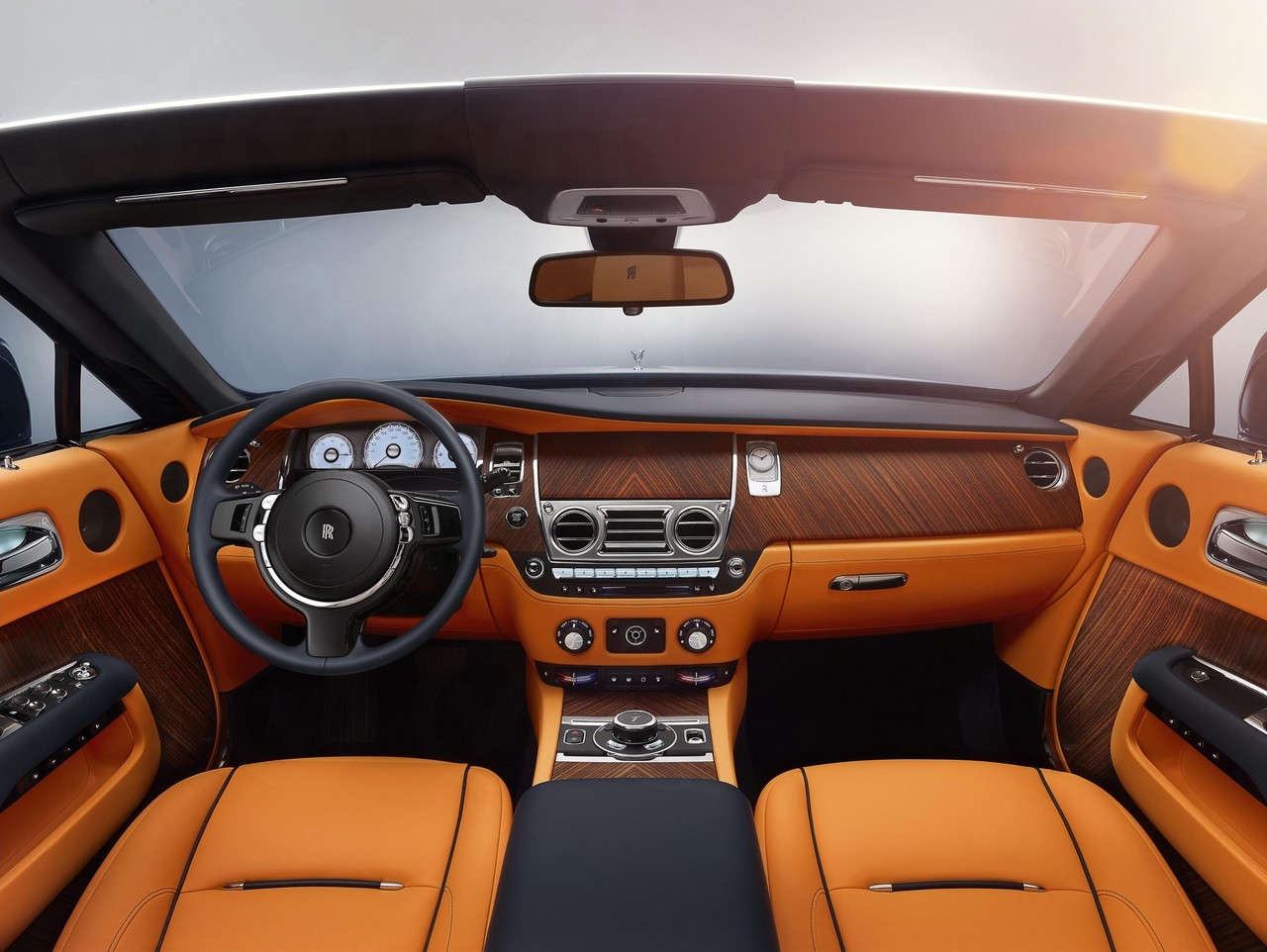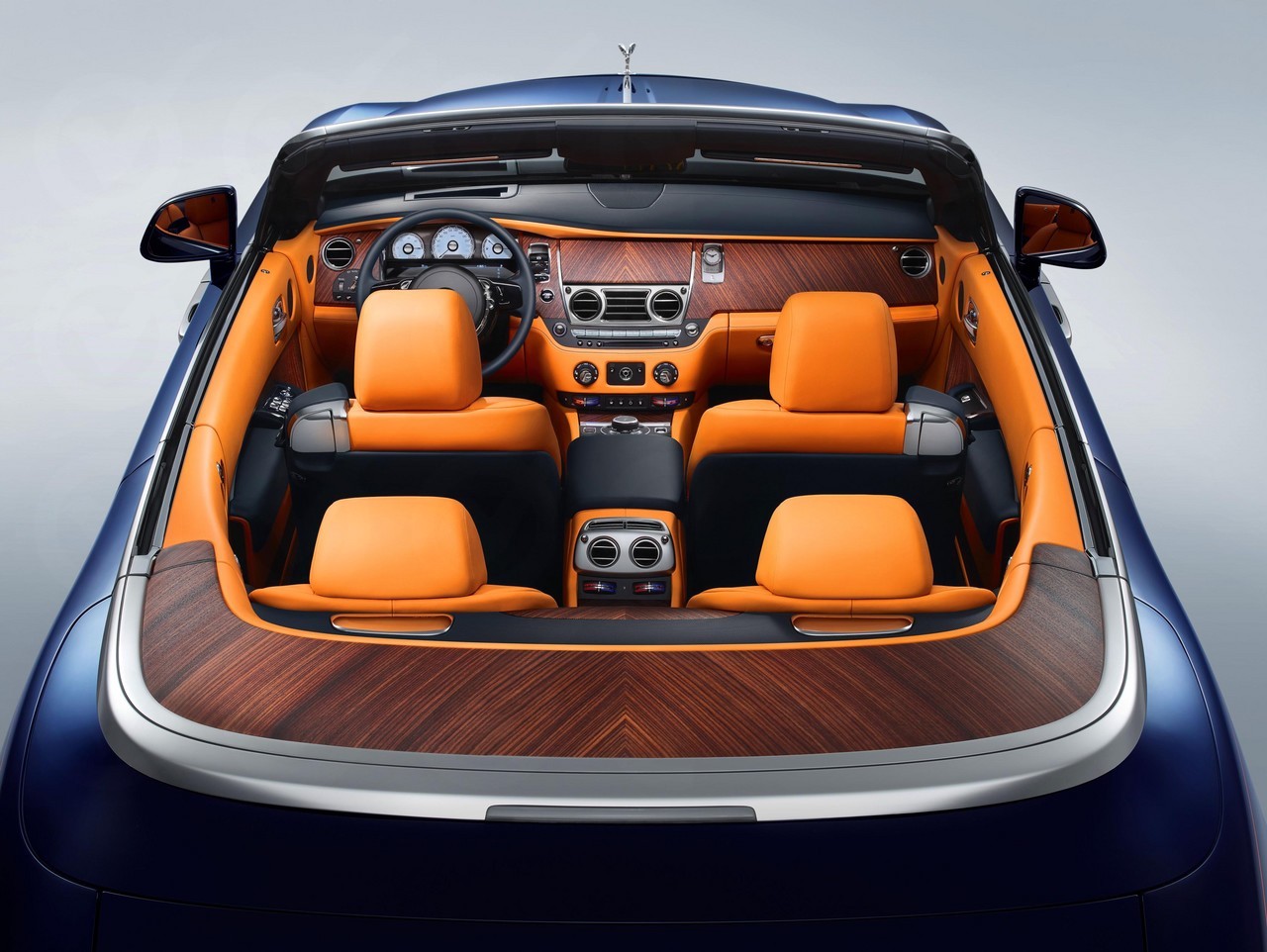
- Powerful 6.6-litre twin-turbo N74B66 V12 engine
- Refined eight-speed ZF transmission
- Comfortable, cosseting ride
- Impressive rear headroom
- Well-insulated roof
- Retail price of $749,000, but not fitted with autonomous emergency braking
- Slow-ratio steering
- Steering wheel shimmy over mid-corner bumps
- Body roll when cornering
- High running, servicing and depreciation costs
Overview
The Rolls-Royce Dawn was available to order from late 2015, with Australian deliveries commencing in early 2016. Manufactured in Goodwood, England, the rear-wheel drive Rolls-Royce 666 Dawn was a four-seat convertible that was powered by a 6.6-litre twin-turbocharged V12 petrol engine, while an eight-speed automatic transmission was fitted as standard.
N74B66 V12 engine
The 6.6-litre BMW N74B66 V12 petrol engine had an aluminium alloy (Alusil) block, an aluminium cylinder head, direct petrol injection, a single scroll turbocharger for each cylinder bank (each providing peak boost pressure of 0.7 bar or 10.15 psi), double overhead camshafts, four valves per cylinder, variable valve lift and variable valve timing (BMW’s VANOS), direct injection and a compression ratio of 10.0:1. Producing peak outputs of 420 kW and 780 Nm, the Dawn could accelerate from rest to 100 km/h in 5.0 seconds, while its top speed was electronically limited to 250 km/h.
ZF 8HP90 transmission
The Rolls-Royce Dawn was fitted with ZF’s 8HP90 eight-speed automatic transmission as standard. For the Dawn, the transmission featured a Satellite Aided Transmission (SAT) function which used GPS data to monitor the driver’s predicted route and automatically select the right gear for the road ahead, thereby avoiding unnecessary gear changes.
| Engine | Trans. | Peak power | Peak torque | |
|---|---|---|---|---|
| Dawn | 6.6-litre twin-turbo petrol V12 | 8sp auto | 420 kW at 5250-6000 rpm | 780 Nm at 1500-5000 rpm |
Body and suspension
Cognisant of the rear-seat legroom compromises of ‘2+2’ convertibles, Rolls-Royce claimed that the Dawn was ‘the world’s only true modern four-seater super-luxury drophead.’ According to Rolls-Royce, the roof of the Dawn provided the silence of the Wraith coupe when up and operated in almost complete silence to open or close in 22 seconds and at speeds up to 50 km/h.
Compared to the Rolls-Royce Wraith with which it shared its underpinnings, the Rolls-Royce Dawn was 16 mm longer (at 5285 mm), the same width (1947 mm) and 5 mm lower (1502 mm), though wheelbase length was unchanged at 3112 mm. Furthermore, the Rolls-Royce Dawn had an unladen weight of 2560 kg, while boot capacity ranged from 244 to 295 litres depending on roof position.
According to Rolls-Royce, the Dawn’s rearward opening coach doors not only improved access to the seats but added to the rigidity of the body as they allowed the construction of an uninterrupted A-pillar – this design contributed to the Rolls-Royce Dawn being the most rigid four-seater convertible at the time of its release. Furthermore, the Rolls-Royce Dawn was said to reflect ‘timeless Rolls-Royce design principles – 2:1 wheel height to body height, a long bonnet, short front overhang, a long rear overhang, an elegant tapering rear graphic and a high shoulder line.’
Suspension
The Rolls-Royce Dawn had double wishbone front suspension and multi-link rear suspension, both with air springs and electronically controlled dampers.
Safety equipment
Standard safety equipment for the Rolls-Royce Dawn included dual front airbags, dual front knee airbags, front seat-mounted side airbags, ABS, electronic brake force distribution, brake assist, electronic stability control with cornering brake control, rollover stability control, traction control, active front seat head restraints and seatbelts with pre-tensioners and load limiters for all seats.
It is understood that the Rolls-Royce Dawn was fitted – as standard – with Automatic Cruise Control which used a radar sensor to scan the road ahead for vehicles and would adjust cruising speed accordingly, and a lane departure warning system.
In the event of an anticipated rollover, the Rolls-Royce Dawn had a concealed roll-over protection system which could deploy from behind the rear head restraints and then be secured by a ratchet system.
As an option, the Rolls-Royce Dawn could be specified with a grille-mounted infra-red night vision camera that could detect potential hazards up to 300 metres away.
Wheels, tyres and brakes
The Rolls-Royce Dawn had 8.5J x 20-inch front and 9.5J x 20-inch rear alloy wheels that were fitted with 255/45 R20 and 285/40 R20 runflat tyres, respectively. Furthermore, the Dawn had 395 mm by 36 mm ventilated front disc brakes and 402 mm by 30 mm ventilated rear disc brakes.
Features: Rolls-Royce Dawn
Inside, the Rolls-Royce Dawn featured a Multimedia Interface and Navigation system which had a 10.25-inch HD screen, a Spirit of Ecstasy Rotary Controller and a one touch pad to access media and navigation functions. The Multimedia Interface and Navigation system could also respond to voice commands and recognise hand writing.
The Rolls-Royce Dawn had a specially calibrated ‘Bespoke Audio’ system with sixteen individually-tuned speakers, including two bass speakers located in the boot to complement seven tweeters placed throughout the cabin. The Bespoke audio system used a microphone to monitor ambient exterior noise and adjust volume and tone settings accordingly. Furthermore, each individual speaker had frequency and phase correction to eliminate potential loud and dead spots caused by outside influences.
Other standard features for the Rolls-Royce Dawn included Natural Grain leather upholstery, four-zone climate control air conditioning, adaptive LED headlights, LED daytime running lights, a surround view camera system, a head-up display (provided information such as current speed, directions, speed limits and lane departure warnings), remote central locking with proximity key, hand-cut wood veneers (in open grain Canadel or burr finishes), an alarm and immobiliser.
Brochure
Related links
